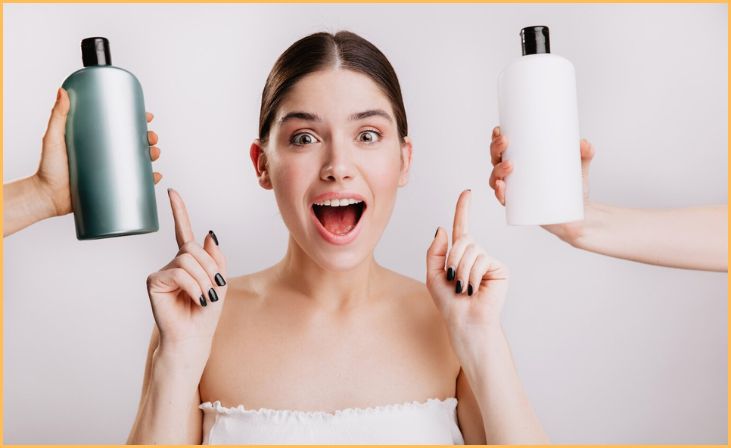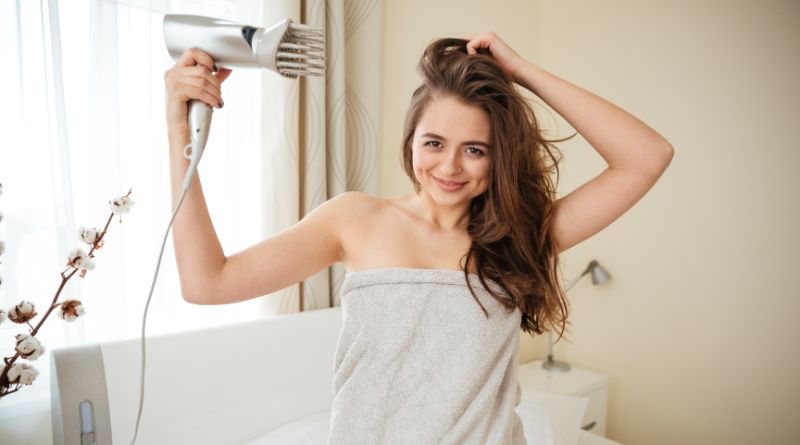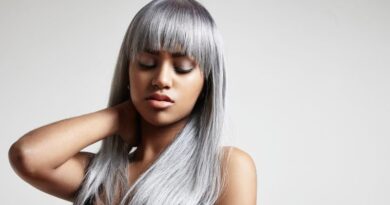A complete hair care routine is essential for maintaining healthy, beautiful hair. It involves a combination of proper cleansing, conditioning, styling, and protecting your hair from damage. By following a comprehensive hair care routine, you can address common hair concerns, such as dryness, frizz, and breakage, and achieve the luscious locks you desire. In this blog post, we will outline ten steps to follow for a complete hair care routine for women, empowering you to nurture and enhance the health and appearance of your hair.
A well-rounded hair care routine encompasses various aspects of hair care, including cleansing, moisturizing, and protecting your hair from external factors. From choosing the right shampoo and conditioner for your hair type to incorporating regular deep conditioning treatments and heat protection, these ten steps will provide you with a foundation for achieving and maintaining healthy, vibrant hair.
Effective Tips For a Complete Hair Care Routine
Your hair is an important part of your overall appearance, and taking care of it should be a priority. From selecting the right products to adopting healthy habits, a complete hair care routine can make a significant difference in the look and feel of your hair.
1. Choosing the Right Shampoo

The cornerstone of an effective hair care routine lies in choosing the right shampoo tailored to your unique hair characteristics. If you’re grappling with dryness, opt for a hydrating shampoo enriched with ingredients like shea butter or argan oil. Those dealing with excess oil production can benefit from clarifying or volumizing shampoos that provide a thorough cleanse without stripping essential oils.
For individuals with damaged hair, a repairing shampoo infused with proteins and natural oils can work wonders in restoring health and vitality. Color-treated hair requires a specialized shampoo with color-protecting properties to prevent fading and maintain vibrancy. Carefully selecting a shampoo aligned with your hair’s specific needs lays the foundation for a successful hair care regimen, ensuring your locks receive the targeted care they deserve.
Quick Link: How to Speed Up Hair Growth After Thinning: A Comprehensive Guide
2. Conditioning
Conditioning plays a vital role in nurturing soft, manageable hair, and it’s imperative to choose a conditioner that complements your chosen shampoo. When applying conditioner, focus on the mid-length to the tips of your hair, steering clear of the scalp to prevent unnecessary oiliness. For those with fine or oily hair, consider using a lightweight conditioner to provide moisture without weighing down your locks.
If your hair is prone to dryness or damage, opt for a hydrating conditioner enriched with ingredients like shea butter, argan oil, or glycerin. These components deeply nourish, restoring moisture and softness to your hair. Regular conditioning, in harmony with your shampoo, forms a dynamic duo in maintaining the health, texture, and luster of your hair. Tailoring your conditioner choice to your specific hair needs ensures optimal results, promoting a silky-smooth finish and overall hair well-being.
3. Proper Washing
Achieving clean and healthy hair starts with proper washing techniques. Begin by thoroughly wetting your hair with lukewarm water; this opens the hair cuticles and prepares them for effective cleansing. When applying shampoo, focus on the scalp, gently massaging in circular motions to stimulate blood flow and distribute the product evenly.
Rinse your hair thoroughly, ensuring there’s no residual shampoo left behind. This step is crucial in preventing product buildup, which can lead to issues like dullness and irritation. Consistent and thorough rinsing also ensures that your hair is ready to absorb the benefits of conditioning.
4. Less Frequent Washing
Adopting a less frequent washing routine can significantly benefit the health and appearance of your hair. Washing your hair daily may strip away its natural oils, leading to dryness and brittleness. By opting to wash your hair 2-3 times a week, you allow your scalp to maintain a balance between cleanliness and moisture.
The natural oils produced by your scalp serve as a protective barrier, keeping your hair hydrated and nourished. Overwashing can disrupt this balance, making your hair more prone to dryness and potential damage. By spacing out your wash days, you give your hair the opportunity to retain its natural oils, promoting a healthier and more vibrant look.
Additionally, less frequent washing can be particularly beneficial for individuals with certain hair types, such as those with curly or textured hair that tends to be drier. It allows the hair to retain its natural moisture, reducing the risk of frizz and enhancing its overall manageability.
5. Cool Water Rinse
Incorporating a cool water rinse into your hair wash routine can serve as a beneficial finishing touch. After completing the shampoo and conditioning steps, adjust the water temperature to cool or lukewarm before the final rinse. This cool water rinse helps seal the hair cuticles, which are the outer layers of each hair strand.
Sealing the cuticles is essential for several reasons. Firstly, it contributes to added shine, giving your hair a glossy and healthy appearance. Secondly, the sealed cuticles help prevent moisture loss, maintaining the natural hydration of your hair. This can be particularly advantageous for individuals with dry or frizzy hair, as it minimizes the risk of frizz and enhances the overall smoothness of the hair.
The cool water rinse is a simple yet effective technique that can benefit all hair types. By closing the cuticles, you create a protective layer that not only enhances the visual appeal of your hair but also contributes to its resilience and manageability. Make it a regular part of your hair care routine for that extra boost of shine and frizz control.
Also Read: Aging Gracefully: 6 Hair Mistakes to Avoid for Healthy and Vibrant Hair
6. Towel Drying

Opting for a gentle towel-drying method is a crucial step in maintaining the health and integrity of your hair. Instead of vigorous rubbing, which can lead to friction and potential damage, patting your hair dry with a soft towel is a more hair-friendly approach. Patting helps absorb excess moisture without causing unnecessary stress or breakage to your strands.
This gentle technique is particularly beneficial for individuals with delicate or damaged hair. It minimizes the risk of creating tangles and reduces the likelihood of causing split ends or frizz. Additionally, the soft towel helps retain some of the natural oils in your hair, contributing to its overall moisture balance.
Remember to be patient during the towel-drying process, especially if you have long or thick hair. Taking a few extra moments to gently pat your hair dry can make a significant difference in preserving its health and promoting a smoother texture.
7. Heat Styling Protection
Incorporating a heat protectant spray into your hair care routine is a vital step, especially if you regularly use heat styling tools. These products create a protective barrier on your hair, minimizing the potential damage caused by high temperatures from styling tools like flat irons, curling wands, or blow dryers.
The heat protectant spray acts as a shield, reducing the impact of heat on your hair cuticles. This is crucial for preventing moisture loss, breakage, and the formation of split ends. By applying a heat protectant before styling, you’re taking a proactive approach to maintain the health and integrity of your hair.
When using heat styling tools, it’s essential to follow the instructions on the product label and apply the heat protectant evenly, ensuring thorough coverage. This not only safeguards your hair from thermal stress but also enhances the effectiveness of your styling tools, allowing for smoother and more controlled styling.
Investing in a quality heat protectant is an investment in the long-term health of your hair. It’s a simple yet effective measure to prevent the adverse effects of heat styling, allowing you to enjoy the versatility of styling tools without compromising the well-being of your strands. Make applying a heat protectant spray a routine part of your styling process for healthier, more resilient hair over time.
8. Trim Regularly
Regular trims are a cornerstone of a comprehensive hair care routine, contributing significantly to the overall health and appearance of your hair. Scheduling a trim every 6-8 weeks may seem counterintuitive, especially if you’re aiming for longer locks, but it’s an essential step in preventing the development and progression of split ends.
Trimming is crucial for removing any existing split ends, preventing them from traveling further up the hair shaft and causing more extensive damage. By regularly eliminating these damaged ends, you not only maintain the integrity of your hair but also promote a healthier growth environment for new strands.
Split ends can make your hair look frizzy, dull, and unkempt. Regular trims ensure that your hair remains neat, vibrant, and manageable. They contribute to a polished and well-groomed appearance, allowing you to enjoy the beauty of your natural or styled hair without the distraction of damaged ends.
Additionally, trimming promotes a more uniform and even hair length, enhancing the overall aesthetic of your hairstyle. Whether you prefer short, medium, or long hair, maintaining a consistent length through regular trims helps achieve a well-balanced and visually appealing look.
9. Balanced Diet
Maintaining a balanced diet is paramount for promoting optimal hair health, as the nutrients you consume play a crucial role in the strength, shine, and overall well-being of your hair. Biotin, also known as vitamin B7, is essential for the production of keratin, a protein that forms the foundation of hair strands. Including biotin-rich foods like eggs, nuts, and seeds in your diet can contribute to stronger, healthier hair.
Zinc is another vital nutrient that supports hair growth and helps prevent hair loss. Incorporate zinc-rich foods such as lean meats, seafood, and whole grains to ensure your body has an adequate supply for maintaining hair strength. Moreover, vitamins A and E act as antioxidants, protecting your hair from oxidative stress and promoting a healthy scalp. Carrots, sweet potatoes, and leafy greens are excellent sources of vitamin A, while nuts and seeds provide vitamin E.
Protein is the building block of hair, and a diet rich in high-quality protein sources like lean meats, fish, dairy products, and legumes ensures that your hair receives the necessary amino acids for growth and strength. Including a variety of protein-rich foods in your meals supports the overall health of your hair.
Also check: Care and Styling Tips for 4B Hair Type: Embrace Your Natural Beauty
10. Deep Conditioning

Deep conditioning is a crucial step in a comprehensive hair care routine, offering an extra layer of nourishment that goes beyond regular conditioning. Incorporating a deep conditioner or hair mask into your weekly routine is particularly beneficial for those with damaged or dry hair. These intensive treatments are formulated with potent ingredients designed to hydrate, repair, and rejuvenate your locks.
The deep conditioning process involves applying a generous amount of the product to your clean, damp hair, ensuring even distribution from roots to ends. The rich formulation often includes ingredients like shea butter, argan oil, and proteins that deeply penetrate the hair shaft, providing essential nutrients and moisture. This helps restore the natural elasticity and strength of your hair, leaving it noticeably softer and more manageable.
Allowing the deep conditioner to sit on your hair for the recommended time, often specified in the product’s instructions, allows the ingredients to work their magic. Some people enhance their effectiveness by covering their hair with a shower cap or warm towel, creating a heat-activated treatment that maximizes absorption.
Bottom Line
In conclusion, a complete hair care routine is crucial for women who want to achieve and maintain healthy, beautiful hair. By following the ten steps outlined in this blog post, you can develop a comprehensive routine that addresses all aspects of hair care, from cleansing to styling and protecting. Remember to choose products that suit your hair type, be consistent with your routine, and listen to your hair’s needs. With dedication and care, you can nurture your hair and achieve the healthy, luscious locks you desire.
FAQs
The frequency of washing depends on your hair type; generally, 2-3 times a week is suitable for most.
Yes, a conditioner helps replenish moisture, detangle hair, and enhance its overall texture.
Deep conditioning is beneficial for all hair types, promoting long-term health and preventing potential damage.
Scalp massage boosts blood circulation, promoting hair growth and ensuring a healthy scalp environment.







